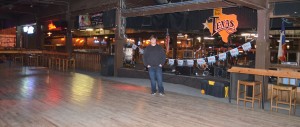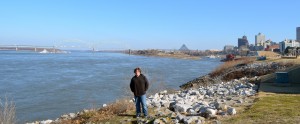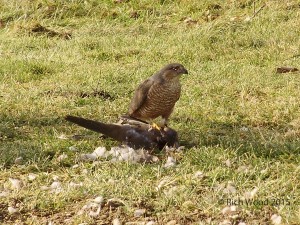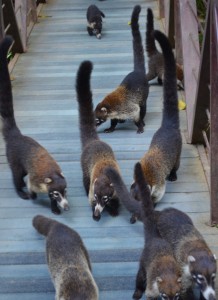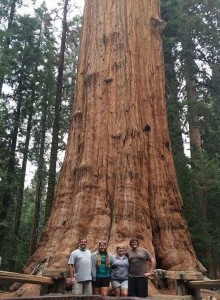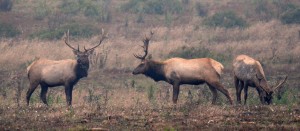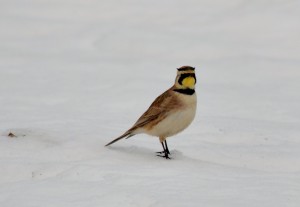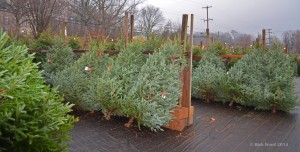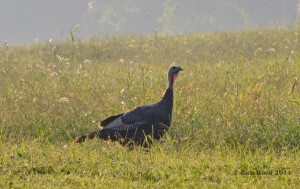Texas. It’s big, really big. Day 3 was all about Texas. Since 3pm on day two, we had been crossing the Lone Star State. Although we had several stops and did not cross it at its widest point, we still put in over 8 hours of driving time, just in Texas! That’s the equivalent of driving from our home in Pottstown, PA, west to Harrisburg, then south through MD, WV, VA and into TN in one day! The highlight was our visit to the famous Fort Worth Stockyards, with a quick stop to check out Billy Bobs, the Worlds Largest Honkey Tonk. Although the huge bar and dance hall had just opened for the day, they let Tyler and I in to have a looksee and snap a few photos. It’s quite a bar, and we wished we could have stayed for a Saturday Night celebration, including live bull riding!
As we left Billy Bobs, we stumbled upon a daily (actually, 2x/day) event that happens in the stockyards-a short cattle drive down main street. Several Texas longhorns are led down the street by cowboys, passing very close to BMWs and minivans that are parked along side. We got a chuckle at one point when one of the cowboys shouted to another that “Chet,” a large-horned cow in the back of the herd, was slowing all the rest of them down, and Chet needed to pick up the pace. We watched Chet closely after the dressed cowpoke hollered, and we think he actually smirked, and slowed down even more, just to piss the riders off a bit. Chet did speed up a little when another cowboy rode back and showed him the steakhouse they were all trotting by!

After leaving Fort Worth, we began our long trek across West Texas. If you’ve ever been to West Texas, you know the landscape is not very exciting to look at. I know that every environment has its own natural beauty, but today, the last day of January, in dreary, rainy weather, we did not witness much of that beauty. Yes, we saw an occasional kestrel perched on a wire, and a raven or two, but that was about it for 5 hours. What we did see were oil and gas wells. Hundreds and hundreds of them dotted the landscape for a hundred miles on both sides of the highway. We didn’t even see a roadkill of any kind! We did catch sight of a single Eurasian Collared Dove in Big Spring. We think it was a Lonesome Dove!
Our last stop of the day may have been the most interesting. We learned that there was a replica of the Worlds Largest Paper Airplane in Abilene, and we HAD to go and see that! We finally found it in the backyard of a small art gallery, except the gallery was closed with a locked gate. So, we noticed a gas station right next door where we could park and sneak a look/photo over the broken down fence. I did notice the No Trespassing signs and respected them. Tyler had ran in to the mini-mart to quickly use the restroom, while I used my stealth skills to sneak a picture. After snapping a quick pic, I noticed a man walking straight toward me, from the direction of the closed art gallery. Uh Oh! Was I busted? The man came right up to me, as Tyler came walking over. I asked him if the gallery was going to open. He walked within three feet of me, stopped and said, “I don’t know, are you supposed to be meeting me?” I looked at him, then at Tyler, then back at him, with a puzzled look on my face. I noticed he was holding a wad of cash in his hand. When he spotted my camera, he quickly turned, and walked away to a waiting car. Tyler looked at me with a weird smile and asked, “Was he trying to by drugs from you?” “Dad, I think you just broke up his drug deal-you obviously weren’t the one he was hoping to see!” Tyler said, half laughing. We jumped in the Prius and left Abilene and Texas in the rear view mirror, heading for NM border. What a day!

